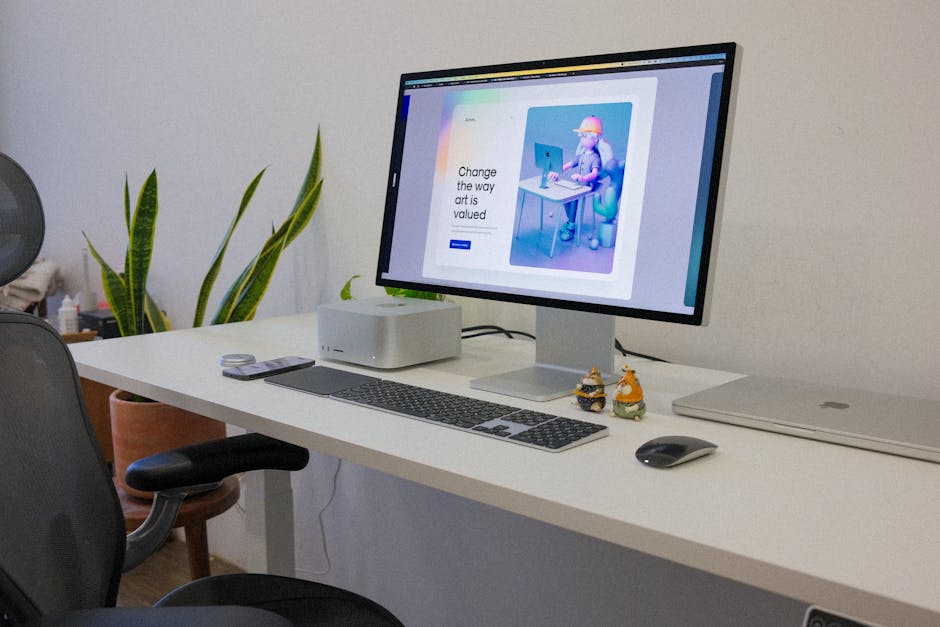Creating the Ideal Work Environment: Maximizing Productivity and Employee Satisfaction
“This article explores the concept of an ideal working environment, discussing various office setups and their impact on employee productivity and satisfaction. It provides insights into how organizations can create a perfect work environment tailored to their workforce's needs and preferences. ”

Creating the Ideal Work Environment: Maximizing Productivity and Employee Satisfaction
In today's dynamic business landscape, organizations are increasingly recognizing the importance of creating an ideal working environment that fosters productivity, creativity, and employee satisfaction. The perfect work environment goes beyond just providing a desk and a chair; it's about understanding the unique needs of your workforce and tailoring the workspace to support their best performance.

Understanding the Importance of Workplace Design
The design and layout of a workplace can significantly impact employee performance, engagement, and overall job satisfaction. As companies compete for top talent, the focus has shifted from cost-efficiency per square foot to maximizing the workplace experience. A well-designed office space can:
- Boost productivity and efficiency
- Enhance collaboration and communication
- Improve employee well-being and job satisfaction
- Attract and retain top talent
Types of Office Environments
There are several types of office environments, each with its own advantages and potential drawbacks. Let's explore some of the most common setups:
1. Closed Office Plan
A closed office plan features individual offices or cubicles for employees. This setup offers:
- Privacy for focused work
- Reduced noise and distractions
- Personalized workspace
However, it may limit collaboration and communication between team members.
2. Open Office Plan
The open office concept has gained popularity in recent years. It typically involves:
- Large, shared workspaces
- Minimal physical barriers between employees
- Increased opportunities for collaboration
While open offices can foster teamwork, they may also lead to increased noise levels and distractions for some employees.
3. Activity-Based Workplace
An activity-based workplace (ABW) provides various spaces designed for specific tasks. This flexible approach includes:
- Quiet zones for focused work
- Collaborative areas for team projects
- Social spaces for informal interactions
ABW allows employees to choose the most suitable environment for their current task, promoting productivity and employee satisfaction.

4. Coworking Solutions
Coworking spaces offer a flexible alternative to traditional office setups. They provide:
- Shared workspaces for individuals and small teams
- Networking opportunities with professionals from various industries
- Flexible lease terms and amenities
Coworking solutions can be particularly beneficial for startups, freelancers, and remote workers.
5. Remote Work Setup
With the rise of technology and recent global events, remote work has become increasingly common. A remote work environment offers:
- Flexibility in work location and hours
- Reduced commute time and costs
- Potential for improved work-life balance
However, it requires self-discipline and effective communication tools to maintain productivity and team cohesion.
Finding Your Ideal Work Environment
To determine your ideal working environment, consider the following factors:
- Work style: Are you more productive in a quiet, focused environment or a bustling, collaborative space?
- Job responsibilities: Does your role require frequent collaboration or long periods of concentrated work?
- Personality: Are you an introvert who thrives in solitude or an extrovert who gains energy from social interactions?
- Company culture: How does your ideal work environment align with your organization's values and goals?
By reflecting on these aspects, you can identify the type of workspace that best supports your productivity and job satisfaction.
Creating the Perfect Work Environment
Organizations looking to create an ideal working environment should consider the following steps:
-
Assess employee needs: Conduct surveys and gather feedback to understand your workforce's preferences and requirements.
-
Offer variety: Provide a mix of spaces to accommodate different work styles and tasks, such as quiet areas, collaborative zones, and social spaces.
-
Prioritize ergonomics: Invest in comfortable, adjustable furniture to support employee health and well-being.
-
Optimize lighting and temperature: Ensure adequate natural light and maintain comfortable temperature levels throughout the office.
-
Incorporate nature: Introduce plants and natural elements to improve air quality and create a more pleasant atmosphere.
-
Embrace technology: Implement tools and systems that facilitate seamless communication and collaboration, especially for remote or hybrid work setups.

The Future of Work Environments
As the nature of work continues to evolve, so too will our understanding of the ideal working environment. Hybrid work policies that combine in-office and remote work are becoming increasingly popular, offering employees greater flexibility while maintaining the benefits of face-to-face collaboration.
Organizations that prioritize creating adaptable, employee-centric workspaces will be better positioned to attract top talent, boost productivity, and foster innovation in the years to come.
Conclusion
The ideal working environment is not a one-size-fits-all solution. It requires a thoughtful approach that considers the diverse needs of your workforce and the unique characteristics of your organization. By investing in creating a perfect work environment, companies can unlock their employees' full potential, driving success and satisfaction across the board.
Remember, the key to a productive and engaging workplace lies in understanding your employees' needs, offering flexibility, and continuously adapting to the changing landscape of work. With these principles in mind, you can create an ideal working environment that supports your team's success and your organization's growth.